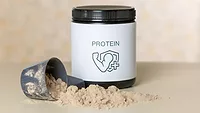Consumer Reports Calls Caramel Color 'Potentially Carcinogenic', Petitions FDA

Yesterday on its website, Consumer Reports published a Special Report titled, "Caramel color: The health risk that may be in your soda." Noting that "some types of this artificial coloring contain a potentially carcinogenic chemical called 4-methylimidazole (4-MEI)," the article went on to explain that Consumer Reports had run tests on 12-ounce samples of several different cola drinks. The organization found that two products, Pepsi One and Malta Goya, had more than 29 micrograms of 4-MEI per can or bottle, and has asked the California Attorney General to investigate whether these sodas should carry a warning label as per Proposition 65.
Consumer Reports also submitted its test results to the U.S. Food and Drug Administration (FDA). The organization is petitioning the FDA "to set a federal standard for 4-MEI and in the meantime to require manufacturers to list the type of caramel color they use on their products’ ingredient lists." Specifying the type of caramel coloring is important because there are four types, and only the two made with ammonia compounds can contain 4-MEI, Consumer Reports explained.
Regarding FDA's initial response, Consumer Reports wrote: "In a statement from the agency, the FDA said it does not believe that 4-MEI from caramel color at levels currently in food pose a risk. However, they appreciated Consumer Reports’ tests and are currently doing their own tests of foods, including sodas, for 4-MEI. They are also reviewing new safety data on 4-MeI to determine what, if any, regulatory action needs to be taken."
As one might expect, the consumer press and industry groups reacted immediately. National Public Radio (NPR) and NBC posted stories, and the American Beverage Association (ABA) issued the following statement:
“First and foremost, consumers can rest assured that our industry's beverages are safe. Contrary to the conclusions of Consumer Reports, FDA has noted there is no reason at all for any health concerns, a position supported by regulatory agencies around the world. In fact, FDA has noted that a consumer ‘would have to drink more than a thousand cans of soda in a day to match the doses administered in studies that showed links to cancer in rodents.’ However, the companies that make caramel coloring for our members' soft drinks are now producing it to contain less 4-MEI, and nationwide use of this new caramel coloring is under way.”
The ABA also provided additional background information:
- Leading public health organizations have reaffirmed that caramel coloring, including the trace amounts of 4-MEI found in it, is safe for use in colas and countless other foods.
- The FDA has stated, "A consumer would have to drink more than a thousand cans of soda in a day to match the doses administered in studies that showed links to cancer in rodents."
- In March 2011, following a comprehensive review of the scientific literature, the European Food Safety Authority (EFSA) reaffirmed that the presence of 4-MEI in caramel coloring is not a health concern.
- In November 2011, Health Canada said that 4-MEI, including that found in certain caramel colors, does "not represent a risk" to consumers.
- The FDA has approved caramel as a color additive and lists it as a "generally recognized as safe" food ingredient.
- California added 4-MEI to its list of carcinogens with no studies showing that it causes cancer in humans. California's listing was based on a study in lab mice and rats. A person would need to drink more than 2,900 cans of cola every day for 70 years to reach the lowest dose levels mice received in the single study upon which California based its decision. And, the study showed a reduction of tumors in the lab rats tested.
- 4-MEI forms in foods, such as caramel, during the heating, roasting and cooking process and is virtually ubiquitous — found in trace amounts in foods and beverages that have been commonly consumed for decades, including baked goods, coffee, breads, molasses, soy sauce, gravies and some beers.
As has happened before when an ingredient was indicted as being a potential carcinogen, the debate over caramel color is unlikely to lose its fizz any time soon.
Looking for quick answers on food safety topics?
Try Ask FSM, our new smart AI search tool.
Ask FSM →






.webp?t=1721343192)

